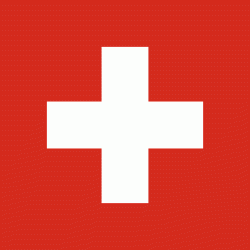Altstadt (Zürich (Kreis 1))
Die Altstadt (German for "the old town") in the Swiss city of Zürich encompasses the area of the entire historical city before 1893, before the incorporation of what are now districts 2 to 12 into the municipality, over the period 1893 to 1934. Die Altstadt approximately corresponds to the area enclosed by the former city ramparts, and is today within the administrative area of the city called Kreis 1 (District 1).
With a population of 5,617 (as of 2015), it houses about 1.4% of the city's total population.
Administratively, District 1 is divided into four parts or quarters by the Zürich statistical office, Rathaus (town hall), Hochschulen (universities), Lindenhof ("lime trees courtyard") and City. Lindenhof and Rathaus correspond to the parts of the medieval city left (west) and right (east) of the Limmat, respectively, while City and Hochschulen include the area of the Early Modern city west and east of the medieval walls, respectively.
Der Lindenhof ("The lime trees courtyard") quarter corresponds to the mindere Stadt, the smaller but more prestigious half of the medieval town left of the river. This is the oldest core of the city, with settlement traces dating to pre-Roman (La Tène) times, and fortified as the Roman Vicus Turicum, a Roman customs station with a surrounding civilian settlement, in the final decades of the 1st century BC.
The Lindenhof hill itself is the site of the Roman castle at the location of the Celtic Oppidum Zürich-Lindenhof, rebuilt in Carolingian times but derelict by the 13th century, when it was used as a source for building stone for the first stone houses of rich burghers of the recently reichsfrei city. The Schipfe quarter at the Limmat below the Lindenhof is the site of the Roman vicus, with traces of a hypocaustum nearby the Münsterhof excavated. St. Peter church was the parish church of the medieval city, built on the site of an earlier temple to Jupiter.
The Rennweg street below the Lindenhof hill was the main street of the medieval city, entering by the Rennweg gate through the western city wall which is now marked by the course of Bahnhofstrasse. Augustinergasse is a small street leading from St. Peterhofstatt situated at the St. Peter church, passing the former Augustinians monastery below the Lindenhof hill, towards the Kecinstürlin gate at the southern Fröschengraben moat, Bahnhofstrasse as of today.
Zunfthaus zur Meisen at Münsterhof plaza near Fraumünster church houses the porcelain and faience collection of the Swiss National Museum. Lindenhof also contains the former Augustinian abbey, and formerly the Oetenbach nunnery north of the Lindenhof hill, demolished in 1903 to make way for the Uraniastrasse as part the partially built «Urania-axis» Sihlporte–Uraniastrasse–Zähringerplatz by Gustav Gull, and the Urania Sternwarte.
With a population of 5,617 (as of 2015), it houses about 1.4% of the city's total population.
Administratively, District 1 is divided into four parts or quarters by the Zürich statistical office, Rathaus (town hall), Hochschulen (universities), Lindenhof ("lime trees courtyard") and City. Lindenhof and Rathaus correspond to the parts of the medieval city left (west) and right (east) of the Limmat, respectively, while City and Hochschulen include the area of the Early Modern city west and east of the medieval walls, respectively.
Der Lindenhof ("The lime trees courtyard") quarter corresponds to the mindere Stadt, the smaller but more prestigious half of the medieval town left of the river. This is the oldest core of the city, with settlement traces dating to pre-Roman (La Tène) times, and fortified as the Roman Vicus Turicum, a Roman customs station with a surrounding civilian settlement, in the final decades of the 1st century BC.
The Lindenhof hill itself is the site of the Roman castle at the location of the Celtic Oppidum Zürich-Lindenhof, rebuilt in Carolingian times but derelict by the 13th century, when it was used as a source for building stone for the first stone houses of rich burghers of the recently reichsfrei city. The Schipfe quarter at the Limmat below the Lindenhof is the site of the Roman vicus, with traces of a hypocaustum nearby the Münsterhof excavated. St. Peter church was the parish church of the medieval city, built on the site of an earlier temple to Jupiter.
The Rennweg street below the Lindenhof hill was the main street of the medieval city, entering by the Rennweg gate through the western city wall which is now marked by the course of Bahnhofstrasse. Augustinergasse is a small street leading from St. Peterhofstatt situated at the St. Peter church, passing the former Augustinians monastery below the Lindenhof hill, towards the Kecinstürlin gate at the southern Fröschengraben moat, Bahnhofstrasse as of today.
Zunfthaus zur Meisen at Münsterhof plaza near Fraumünster church houses the porcelain and faience collection of the Swiss National Museum. Lindenhof also contains the former Augustinian abbey, and formerly the Oetenbach nunnery north of the Lindenhof hill, demolished in 1903 to make way for the Uraniastrasse as part the partially built «Urania-axis» Sihlporte–Uraniastrasse–Zähringerplatz by Gustav Gull, and the Urania Sternwarte.
Map - Altstadt (Zürich (Kreis 1))
Map
Country - Switzerland
 |
 |
| Flag of Switzerland | |
Switzerland is geographically divided among the Swiss Plateau, the Alps and the Jura; the Alps occupy the greater part of the territory, whereas the Swiss population of approximately 8.7 million is concentrated mostly on the plateau, where the largest cities and economic centres are located, including Zürich, Geneva and Basel.
Currency / Language
| ISO | Currency | Symbol | Significant figures |
|---|---|---|---|
| CHF | Swiss franc | Fr | 2 |
| CHE | WIR Bank | 2 | |
| CHW | WIR Bank | 2 |
| ISO | Language |
|---|---|
| FR | French language |
| DE | German language |
| IT | Italian language |
| RM | Romansh language |















